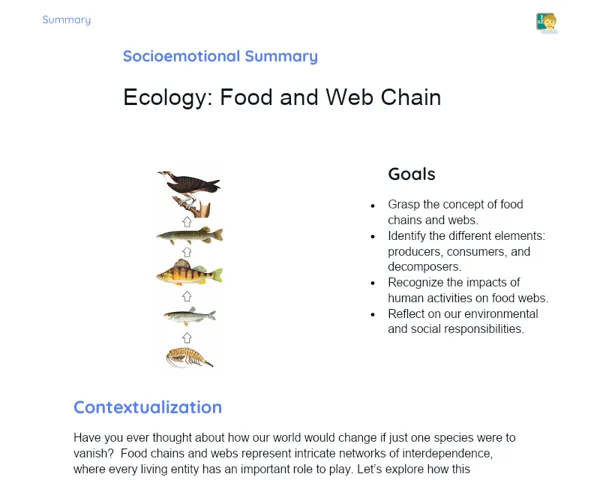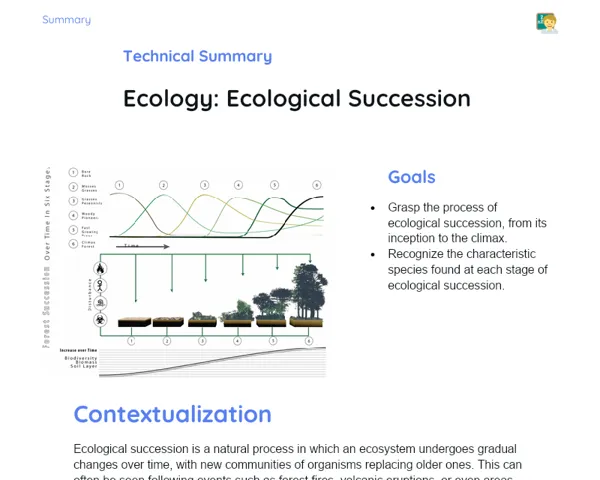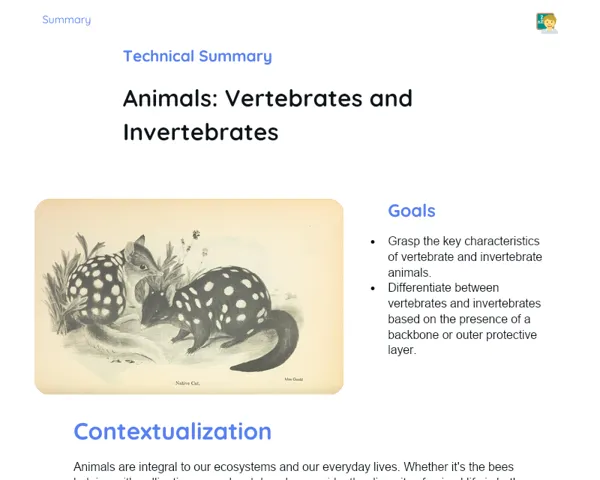Socioemotional Summary Conclusion
Goals
1. Recognize the main types of animal waste: ammonia, urea, and uric acid.
2. Identify which animals these wastes come from.
3. Relate the characteristics of wastes to groups of animals.
Contextualization
Have you ever thought about how different animals manage their waste? 🐟💧 Each creature has its own method of disposing of the substances it no longer needs, and understanding these processes is key to protecting our ecosystems. Get ready to dive into how fish, mammals, and birds excrete their waste, and how these fascinating mechanisms impact life overall! 🌍✨
Exercising Your Knowledge
Ammonia
Ammonia is a highly toxic type of waste predominantly found in aquatic animals, such as fish. Given its toxicity, ammonia needs to be quickly diluted in water, which is readily available in aquatic environments. This efficient excretion process is crucial for the survival of these animals and underscores the relationship between the organism and its habitat.
-
High toxicity: Ammonia is extremely toxic and can be lethal if it accumulates in the body.
-
Need for dilution: Its toxicity necessitates rapid dilution in large amounts of water.
-
Aquatic animals: Primarily excreted by fish and other aquatic organisms that rely on water for dilution.
Urea
Urea is a less toxic waste product compared to ammonia, mainly produced by mammals, including us humans. This compound is water-soluble, making elimination through urine quite efficient. The production of urea is an adaptation that helps conserve bodily water, proving especially beneficial in terrestrial environments where water may not be as abundant.
-
Less toxic: Urea is simpler to handle than ammonia and can be stored in the body temporarily before excretion.
-
Water-soluble: This property allows for excretion through the urinary system in a dissolved state, facilitating disposal.
-
Mammals: Produced mostly by mammals, including humans, and some amphibians that thrive on land.
Uric Acid
Uric acid is the least toxic of the three wastes and is predominantly found in birds, reptiles, and some insects. This compound is not soluble in water and is discharged as a semi-solid paste, which significantly aids in water conservation—particularly advantageous for animals in dry and arid regions.
-
Less toxic: Uric acid is less harmful than both urea and ammonia.
-
Insoluble in water: It is excreted as a semi-solid paste, which helps reduce water loss.
-
Birds and reptiles: Commonly produced by birds and reptiles, adapted to environments where saving water is essential.
Key Terms
-
Excretion: The process of eliminating metabolic waste from the body to maintain balance.
-
Ammonia: Highly toxic waste, easily diluted in aquatic settings.
-
Urea: Less toxic than ammonia, water-soluble, common in mammals.
-
Uric Acid: Low toxicity waste, insoluble in water, excreted by birds and reptiles.
For Reflection
-
How does the surrounding environment influence the different excretion methods in animals?
-
How can understanding the types of waste impact our views on the importance of conserving natural habitats?
-
What socio-emotional skills were important during the group activity, and how can they be applied in various contexts?
Important Conclusions
-
The various types of waste - ammonia, urea, and uric acid - differ in toxicity and the methods by which animals eliminate them.
-
Ammonia, which is highly toxic, is excreted by aquatic animals like fish due to the easy availability of water for dilution.
-
Urea, which is less toxic than ammonia, is produced by mammals and some amphibians, being water-soluble, thus aiding in elimination in land-based environments.
-
Uric acid, being low in toxicity and insoluble in water, is excreted by birds and reptiles, helping them conserve water in dry habitats.
Impacts on Society
Understanding the different types of waste and their relationship with animal habitats enhances our grasp of how evolutionary adaptations support survival across various ecosystems. This knowledge is vital for formulating conservation practices that uphold and protect the biodiversity of our natural surroundings.
Furthermore, by grasping the excretion methods employed by various animals, we can apply this knowledge to create more efficient and sustainable technologies in waste and water resource management. This learning not only sharpens our ecological awareness but also nurtures a bond with the creatures we share our planet with, fostering empathy and a sense of environmental duty.
Dealing with Emotions
When studying this topic, acknowledge your feelings regarding animal excretion - whether it be surprise, curiosity, or confusion. Understand what triggers these emotions - it may be the intricacy of the subject or its connection to animal life. Clearly identify and express these emotions, whether through discussions with peers or journaling. Lastly, regulate your emotions using techniques like deep breathing or taking a brief pause to gather your thoughts.
Study Tips
-
Make study cards featuring the main types of waste and their respective animals, including sketches or diagrams to assist memory.
-
Form small groups to discuss the topic, comparing various excretory systems and their adaptations to their environments.
-
Watch documentaries or read articles that delve into animal physiology and excretion processes, broadening your knowledge and linking classroom concepts to real-life examples.



